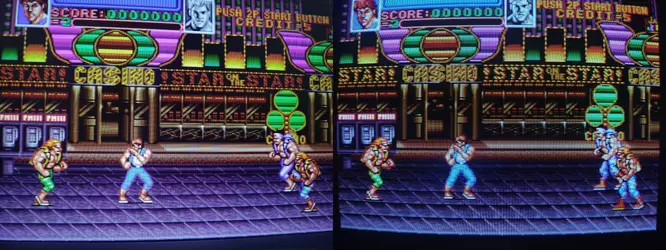In the end, image output wasn't standard during the retro days, you had so many options to get different images, even color palettes varied from display to display, rf, composite, RGB, component at the very end, slot masks, shadow masks, aperture grille, anything ranging from 150 TVL displays to 1000+ TVL. The beauty of shaders is that you can mimick specific aspects that you like, combine them any way you can, nothing stops you. You want accuracy? you purchase actual hardware. You want choice? you spend a ton in having all the cables and different CRTs (even console revisions altered image quality sometimes), or you just mess around with your shader of choice —some of them so configurable and deep that I can't understand the distaste against them, so I'm gonna go with skill issue. You see a screenshot you don't like and think all shaders are shit because you don't even try tweaking them for fun to suit your tastes, and you believe there's only one good true solution to display retro games. If you can't get your desired image with something as customizable and adaptable as Guest Advanced, I call it skill issue. And no, asking me to reproduce your specific CRT over composite without me knowing what it looks like, is useless. You can decide to be open minded or not, and angrily claim everything that isn't what you have in front of you is shit, even going to autismal degrees such as claiming that different glow levels are
wrong. Even on the subject of shaders, the specs and look of your actual monitor will heavily affect the look of them. Using a shader with heavy mask settings on an OLED is not the same as using a more general shader for common displays. Even monitor resolution matters when emulating a CRT mask, and what looks good on one guy's monitor, might look bad on another dude's monitor.
 (Shader vs crt. By an actual open minded guy who doesn't shit on the concept of shaders by default)
(Shader vs crt. By an actual open minded guy who doesn't shit on the concept of shaders by default)
What is more likely, that 100% of retro games were intended for ONE very specific type of image output (that always matches up the criteria of that guy being critical on the internet, curiously), or that it was a more complex affair that varied case by case, and therefore one should be less dogmatic about the whole issue? Fucking hell, even in the NES/SNES days you had games accounting for different aspect ratios. You can't simply claim your specific setup happens to be the correct one for 100% of cases. What is the
truth here?



